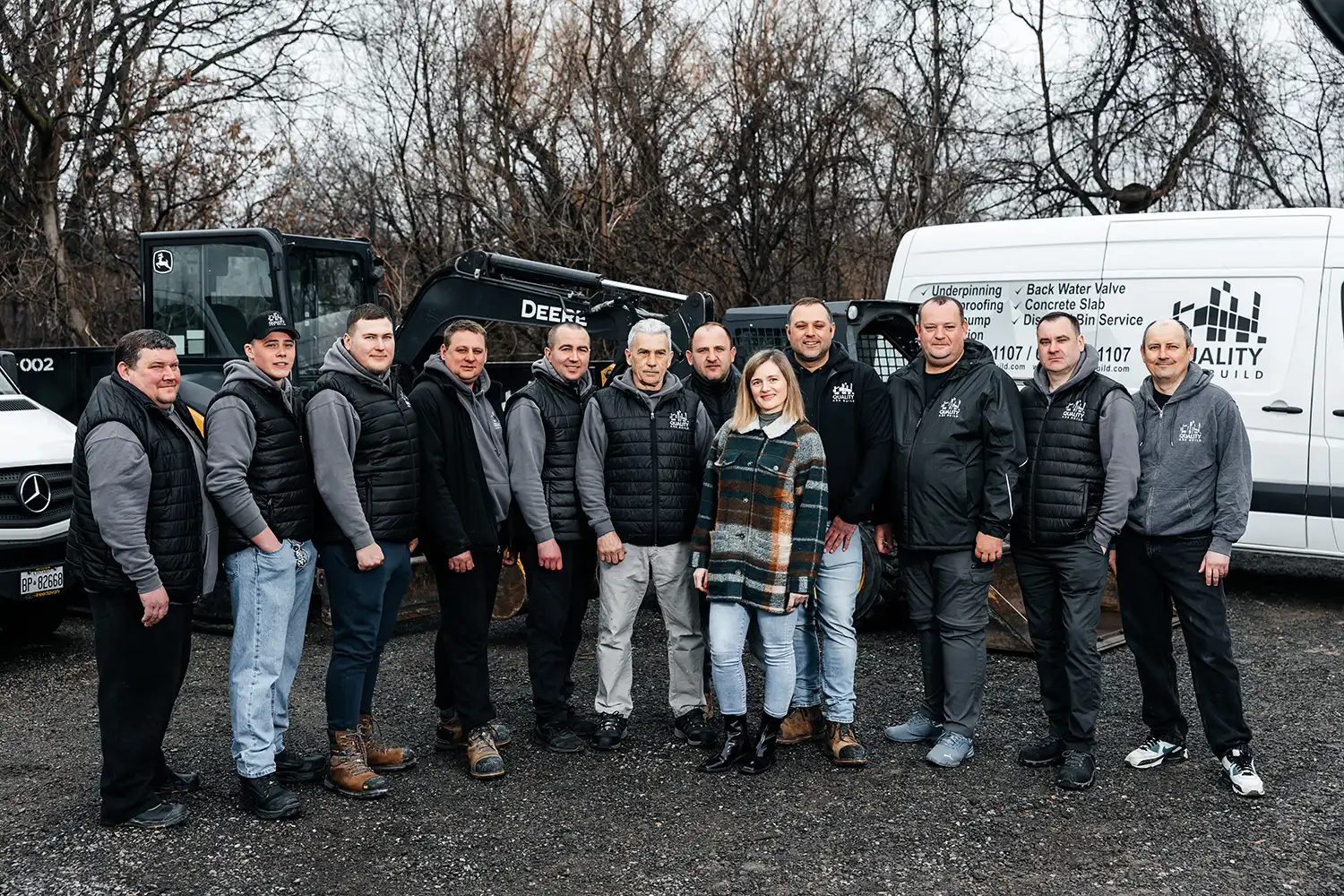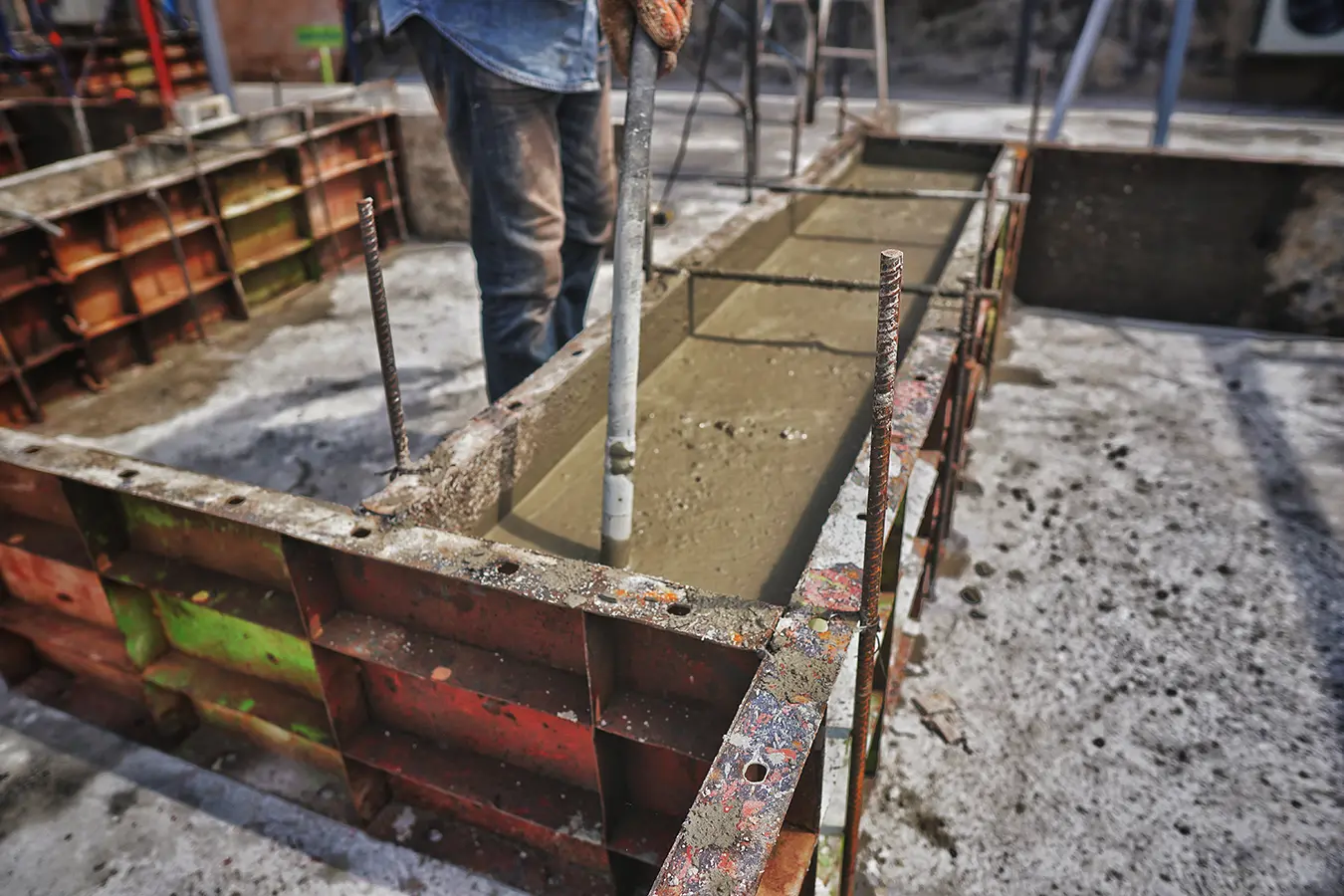Winter is not the best time for outdoor construction and repair work. However, there are cases when there is no time to wait for warmer weather, especially when it comes to the foundation of a house. After all, it is the foundation that ensures the stability of the entire structure.
Can you pour concrete in winter? What are the secrets to prevent it from “melting” with the snow, and how to do a quality Foundation Repair Toronto? Read on.
How Cold Weather Affects Concrete
Pouring concrete in cold weather is a challenging task that requires technological standards. Low temperatures can cause the water in the concrete to freeze, leading to the formation of micro-cracks in the structure. In such conditions, it is necessary to use special additives and techniques to maintain the strength of the structure.
Essential Tips for Successful Concrete Pouring in Cold Weather
You need to know how cold can you pour concrete, to achieve high-quality concrete structures. There are several basic recommendations for Toronto underpinning your foundation in low temperatures.
Plan Ahead and Monitor the Weather
To avoid future problems with the structure, it is important to understand what temperature is too cold to pour concrete Celsius. It should not drop below 5 ˚C for 24 hours. The best results during time of pouring are achieved at temperatures of 10 ˚C or higher.
Add Accelerators to Speed Up the Curing Process
Can you pour concrete in cold weather? Yes, you can, if you add accelerators and cement to the concrete mix. They will reduce the setting time in low temperatures.
Importantly! If you use steel reinforcement during construction, avoid accelerators containing calcium chloride. This can cause rust, which may lead to cracking.
Use Warm Water
Warm water prevents the freezing of the mixture concrete in cold weather and reduces the risk of crack formation.
Prepare and Insulate the Site
Pouring concrete in winter requires some preparation, including:
- Site cleaning: Remove snow, ice, and dirt so the concrete doesn’t come into contact with extra cold.
- Foundation insulation: Create an insulating layer on the site using materials like geotextile, polystyrene foam, etc.
And remember: cold forms for pouring also negatively impact the strength of the concrete, so store them in a closed area.
Protect the Concrete After Pouring
Protect winter concrete from freezing with simple but effective methods:
- Surface insulation: Polystyrene boards, thermal blankets, and special films will protect the concrete from cooling.
- Use of heat generators or heaters: maintain a comfortable temperature around the concrete during time of the curing process.
These measures will positively impact the strength of the structure and protect it from further damage.
Monitor Curing Temperatures
During time curing concrete in cold weather, it is important to minimize negative external impacts. To achieve this, build temporary shelters or tents to retain heat in the concrete. And don’t forget to monitor the humidity level, which also affects the curing speed.
Key Errors to Avoid in Concrete Pouring
Your concrete structure will serve you faithfully for many years if you follow the recommendations and try to avoid common mistakes.
Pouring on Unprepared or Frozen Surfaces
Pouring the mix on unprepared ground will lead to the following problems:
- The concrete will poorly bond with the surface, increasing the risk of destruction;
- The hydration process will be disrupted due to water freezing in the mix.
Additionally, the concrete will set unevenly, causing cracks and depressions.
Disregarding Temperature Control During Curing
Neglecting temperature control during time of curing can lead to insufficient stability, reduced strength, and deformation of the concrete.
Skipping Insulation or Protective Measures
Lack of insulation in sub-zero temperatures can disrupt the concrete curing process. It will set unevenly, leading to defects in the future.
Using Incorrect Mix Ratios or Materials
Too much water or incorrect additives can result in reduced strength, crack formation, and rust on the reinforcement. As a result, the structure will deteriorate quickly.
Rushing the Curing Process and Removing Forms Too Early
Removing the forms too soon disrupts the concrete structure, reducing its durability. Also, never rush the curing process, as the concrete will not reach the required strength.
How Quality Age Build Can Enhance Your Projects
An experienced builder knows that the question “can concrete be poured in winter?” is more about mastering the technologies than about the possibilities.
For structures to be strong and durable in any weather, Quality Age Build has been using the following methods for over 10 years in its work:
- Uses specialized methods for insulating and heating concrete;
- Applies modern mixtures to accelerate hydration;
- Follows temperature standards during time of pouring and curing.
Your concrete will stand the test of time and external factors if it was poured by the experts at Quality Age Build!

Conclusion
Pouring concrete in cold weather requires careful planning and strict adherence to proven practices to avoid defects. It’s important to understand what temperature is too cold to pour concrete, as this determines the success of the project and the longevity of the structure.
Entrust this difficult task to professionals, and your building will stand firmly on the ground for many years without needing repairs.
Contact us
Quality Age Build Inc is at your service across the GTA. Request a quote today and ensure your property is in expert hands.
Related Services
Pair our expert guidance with our foundation services to establish a solid base for your build, ensuring durability and peace of mind.
FAQs
What is the minimum temperature at which you can safely pour concrete?
The minimum temperature for concrete curing is +5 ˚C. If the temperature is lower, it is necessary to use special additives, heat the mix, and insulate the concrete after pouring.
What are the signs that concrete has been damaged by freezing?
Cracks, a porous structure, delamination, or layer separation are signs that the concrete has been damaged by freezing. This will eventually lead to its complete destruction if preventive measures are not taken.
How long should concrete be insulated after pouring in cold weather?
It is important to insulate the concrete for 3–7 days after pouring (depending on the type of concrete and temperature). During this time, the temperature should be kept at no less than +5 ˚C to ensure proper hydration.

